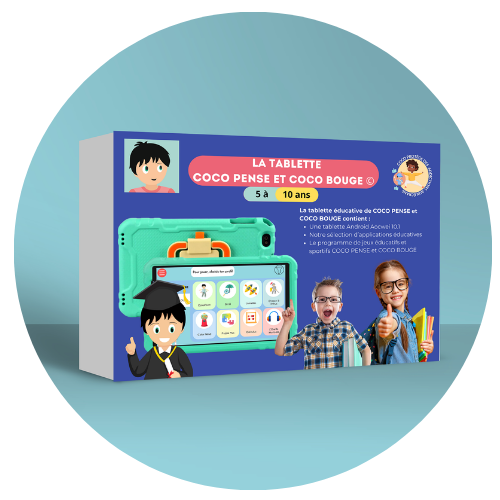Attention Deficit Hyperactivity Disorder (ADHD) is a neurodevelopmental condition that affects millions of children and adults worldwide. It is characterized by persistent patterns of inattention, hyperactivity, and impulsivity that can significantly impact daily functioning and quality of life. For many of us, understanding ADHD is crucial, as it not only affects the individual diagnosed but also their families, friends, and communities.
The symptoms can manifest in various ways, such as difficulty concentrating on tasks, forgetfulness, and challenges in organizing activities. These difficulties can lead to academic struggles, strained relationships, and low self-esteem, making it essential for us to explore effective strategies for managing ADHD. As we delve deeper into the complexities of ADHD, we recognize that it is not merely a childhood disorder; it often persists into adulthood.
Many adults with ADHD face unique challenges in their professional lives and personal relationships. The stigma surrounding ADHD can further complicate the situation, leading to misunderstandings and a lack of support. Therefore, it is vital for us to foster awareness and empathy towards those affected by this condition.
By understanding the nuances of ADHD, we can better advocate for effective interventions and support systems that cater to the diverse needs of individuals with attention difficulties.
Understanding the Role of Digital Tools in ADHD Therapy
In recent years, digital tools have emerged as valuable resources in the management of ADHD. These tools encompass a wide range of applications and devices designed to assist individuals in improving their focus, organization, and overall cognitive functioning. For us, the integration of technology into ADHD therapy represents a significant shift in how we approach treatment.
Digital tools offer innovative solutions that can complement traditional therapeutic methods, providing users with interactive and engaging ways to develop essential skills. As we explore these digital resources, we find that they can empower individuals with ADHD to take charge of their own learning and development. Moreover, the accessibility of digital tools has made them an attractive option for many individuals seeking support for ADHD.
With smartphones and tablets becoming ubiquitous in our daily lives, we can easily access a plethora of applications designed specifically for attention difficulties. These tools often incorporate gamification elements that make learning enjoyable while simultaneously addressing cognitive challenges. By leveraging technology, we can create personalized experiences that cater to individual needs, allowing us to track progress and adjust strategies as necessary.
This adaptability is particularly beneficial for those with ADHD, as it fosters a sense of ownership over their treatment journey.
Utilizing Cognitive Training Apps for Improving Attention and Focus

Cognitive training apps have emerged as powerful tools for enhancing attention and focus, particularly for individuals with ADHD. These applications use targeted exercises to develop key cognitive skills such as working memory, processing speed, and sustained attention. By leveraging technology in this way, cognitive training apps create an engaging and interactive environment where users can practice and strengthen essential abilities.
How Cognitive Training Apps Work
These apps are designed to provide structured and enjoyable activities that challenge cognitive functions:
- Brain-Training Exercises: Focused tasks such as memory puzzles, matching games, or sequencing activities target areas like attention and executive functioning.
- Gamified Learning: By incorporating rewards, levels, and achievements, these apps transform practice into a fun experience, fostering regular engagement.
- Feedback and Progress Tracking: Immediate feedback allows users to see their improvement over time, reinforcing persistence and resilience.
The Benefits of Cognitive Training for ADHD
- Improved Attention Span: Regular use of these apps can help individuals practice maintaining focus on tasks, a key challenge for those with ADHD.
- Enhanced Cognitive Flexibility: Games and exercises encourage quick thinking and adaptability, which are crucial for problem-solving.
- Boosted Confidence: Immediate rewards and positive reinforcement increase self-esteem and motivate users to continue their efforts.
COCO THINKS: A Notable Example
Our COCO THINKS app is specifically tailored to children with ADHD or autism, offering a suite of features designed to support cognitive and emotional development:
- Educational Games: Activities that foster critical thinking and problem-solving while keeping children engaged with bright visuals and interactive gameplay.
- Supportive Environment: The app provides clear instructions and immediate feedback, helping users learn at their own pace.
- Targeted Skills Development: Exercises are crafted to strengthen attention and working memory, two areas commonly affected in ADHD.
Key Advantages of Cognitive Training Apps
- Accessibility: These apps can be used at home, in school, or during therapy sessions, making them flexible tools for diverse environments.
- Personalized Training: Many apps adapt to the user’s skill level, ensuring that the exercises remain challenging yet achievable.
- Cost-Effective Support: Compared to traditional one-on-one therapy, apps offer an affordable way to supplement professional intervention.
Incorporating Wearable Devices for Real-time Monitoring and Feedback
Wearable devices have revolutionized the way we monitor health and well-being, and their application in ADHD therapy is no exception. These devices can track various physiological metrics such as heart rate, sleep patterns, and activity levels, providing valuable insights into an individual’s overall state of mind. For us, incorporating wearable technology into ADHD management allows for real-time monitoring of behaviors associated with attention difficulties.
By analyzing this data, we can identify patterns that may contribute to challenges in focus or impulsivity, enabling us to make informed decisions about interventions. Additionally, wearable devices can offer feedback mechanisms that encourage positive behavior changes. For instance, some devices provide reminders or alerts when users exhibit signs of distraction or restlessness.
This immediate feedback can help individuals with ADHD become more aware of their behaviors and develop strategies to refocus their attention. As we embrace this technology, we recognize its potential to enhance self-regulation skills among those with ADHD. By fostering a greater understanding of their own behaviors through real-time data, individuals can take proactive steps toward managing their attention difficulties more effectively.
Implementing Time Management and Organization Apps for ADHD Management
Time management and organization are critical skills for individuals with ADHD, yet they often struggle in these areas due to their inherent challenges with attention and executive functioning. Fortunately, there are numerous apps available that specifically target these skills, helping users develop effective strategies for managing their time and tasks. For us, utilizing these apps can be a game-changer in promoting organization and productivity among individuals with ADHD.
By providing structured frameworks for planning and prioritizing tasks, these tools empower users to take control of their daily lives. One such app is our COCO MOVES app, which combines movement-based activities with time management techniques tailored for children with ADHD or autism. This app encourages users to engage in physical activity while learning how to break tasks into manageable steps and allocate time effectively.
As we implement these strategies through engaging gameplay, we can witness significant improvements in users’ ability to stay organized and focused on their responsibilities. By fostering a sense of accomplishment through successful task completion, we help build confidence in individuals with ADHD as they navigate their daily challenges.
Exploring the Effectiveness of Mindfulness and Meditation Apps in ADHD Therapy

Mindfulness and meditation practices have emerged as powerful tools for managing ADHD symptoms, offering individuals the means to develop better focus and emotional control. These practices promote self-regulation by encouraging present-moment awareness, helping individuals with ADHD navigate their thoughts and behaviors more effectively. The use of mindfulness and meditation apps is an accessible and convenient way to incorporate these practices into daily life.
How Mindfulness and Meditation Apps Support ADHD Management
These apps provide a variety of tools and features tailored to the unique challenges faced by individuals with ADHD:
- Guided Meditations: Step-by-step instructions help users stay engaged and focused, fostering a gradual improvement in mindfulness skills.
- Breathing Exercises: Techniques like deep breathing or box breathing can immediately calm the mind and reduce stress, aiding in emotional regulation.
- Mindfulness Activities: Exercises such as body scans or mindful journaling encourage users to connect with their present experience, improving self-awareness.
Benefits of Regular Mindfulness Practice
Research highlights the tangible improvements mindfulness can bring to those with ADHD:
- Enhanced Attention Span: Mindfulness helps train the mind to focus, reducing the tendency to become easily distracted.
- Improved Emotional Regulation: Regular practice allows individuals to better manage frustration, anxiety, or impulsive reactions.
- Increased Resilience: Mindfulness strengthens the ability to adapt to challenges, fostering a sense of stability in the face of adversity.
Examples of Effective Apps for ADHD
- Headspace: Offers structured meditation courses and mindfulness exercises, with specific programs targeting focus and stress management.
- Calm: Includes soothing soundscapes, breathing exercises, and daily meditation prompts designed to improve concentration.
- Breethe: Combines meditation with lifestyle coaching, helping users address ADHD-related challenges holistically.
- Smiling Mind: Provides short, accessible mindfulness exercises, ideal for those new to the practice or with limited time.
How These Apps Create Impact
- Structured Approach: Guided sessions eliminate the overwhelm of figuring out where to start, offering users a clear path to mindfulness mastery.
- Accessibility: Being mobile, these apps can be used anywhere, making it easier to integrate mindfulness into even the busiest schedules.
- Personalization: Many apps adapt exercises based on user feedback, tailoring experiences to meet individual needs.
Addressing Social Skills and Communication through Digital Platforms
Social skills development is another critical area where digital tools can play a significant role in supporting individuals with ADHD. Many people with this condition struggle with social interactions due to impulsivity or difficulty interpreting social cues. For us, utilizing digital platforms designed to enhance social skills can provide valuable opportunities for practice in a low-pressure environment.
These platforms often incorporate role-playing scenarios or interactive games that allow users to navigate various social situations while receiving constructive feedback on their performance. Our COCO THINKS app also addresses social skills development by incorporating activities that promote empathy, communication, and teamwork among children with ADHD or autism. Through engaging gameplay that emphasizes collaboration and understanding others’ perspectives, we can help users build essential social competencies that will serve them well in real-life interactions.
By fostering these skills through digital platforms, we empower individuals with ADHD to form meaningful connections with others while enhancing their overall social confidence.
Considerations and Limitations of Using Digital Tools in ADHD Therapy
While digital tools offer numerous benefits for managing ADHD symptoms, it is essential for us to consider their limitations as well. One significant concern is the potential for over-reliance on technology as a sole intervention method. While apps and devices can provide valuable support, they should not replace traditional therapeutic approaches or face-to-face interactions with healthcare professionals.
For us, it is crucial to strike a balance between utilizing digital tools and engaging in comprehensive treatment plans that address the multifaceted nature of ADHD. Additionally, not all digital tools are created equal; some may lack scientific backing or fail to meet the specific needs of individuals with ADHD. As we navigate the vast landscape of available resources, it is vital for us to critically evaluate the effectiveness of each tool before incorporating it into our management strategies.
By remaining informed about the latest research and developments in digital interventions for ADHD therapy, we can make educated choices that enhance our overall approach to managing attention difficulties while ensuring that we prioritize holistic care for those affected by this condition.
For those interested in exploring non-medication treatments for ADHD, particularly in children, you might find the article Non-Medication Treatments for ADHD in Children highly relevant. This article discusses various strategies and tools that can help manage ADHD symptoms without relying on pharmaceutical interventions. It provides insights into how digital tools and other therapeutic approaches can be effectively integrated into a child’s routine to improve attention, focus, and overall cognitive functions, complementing the themes discussed in the context of using digital tools for ADHD therapy.




